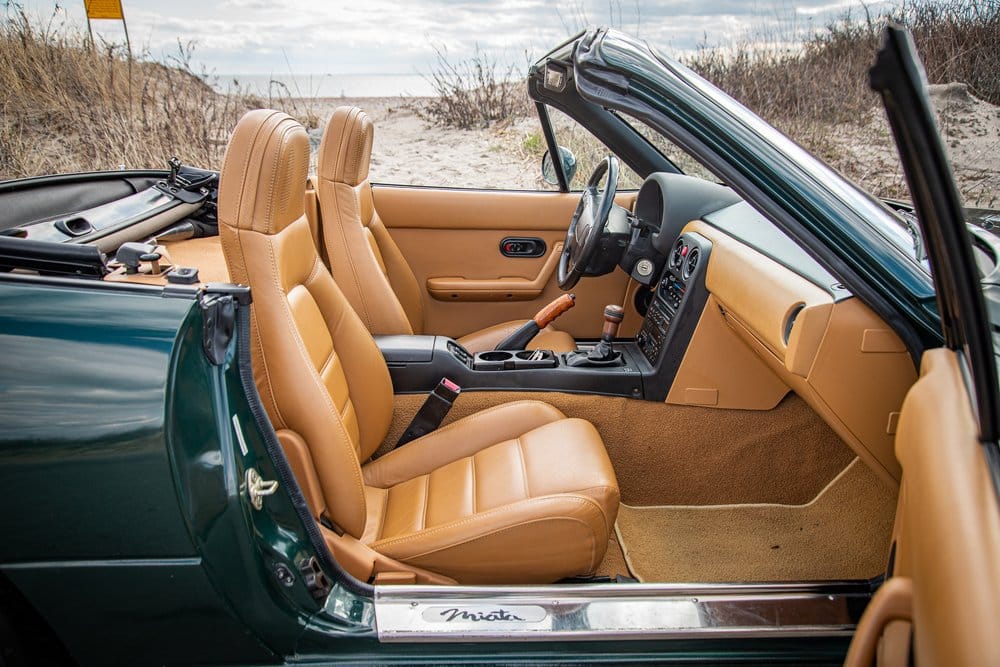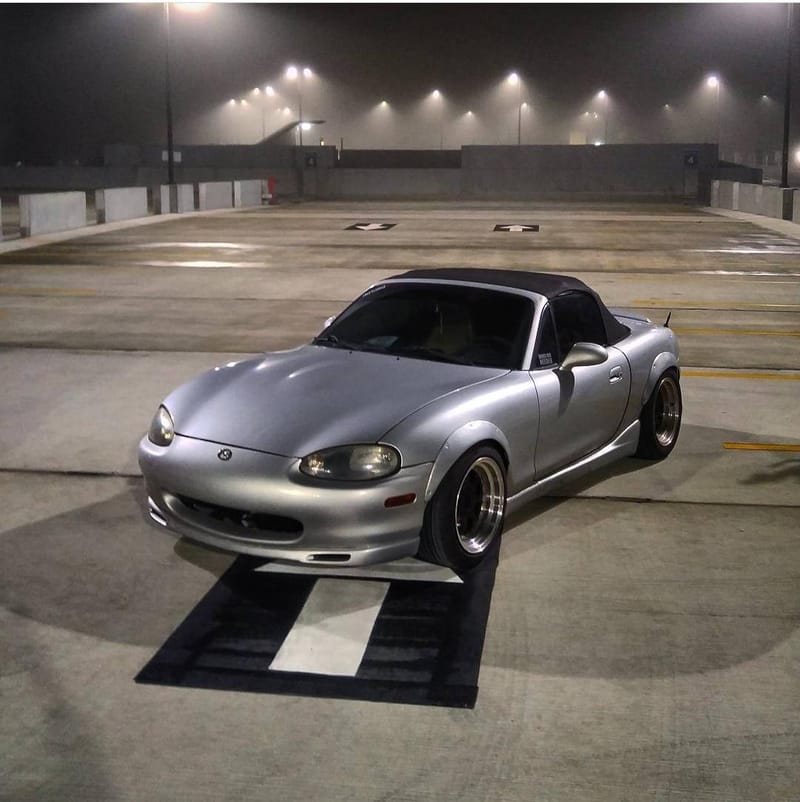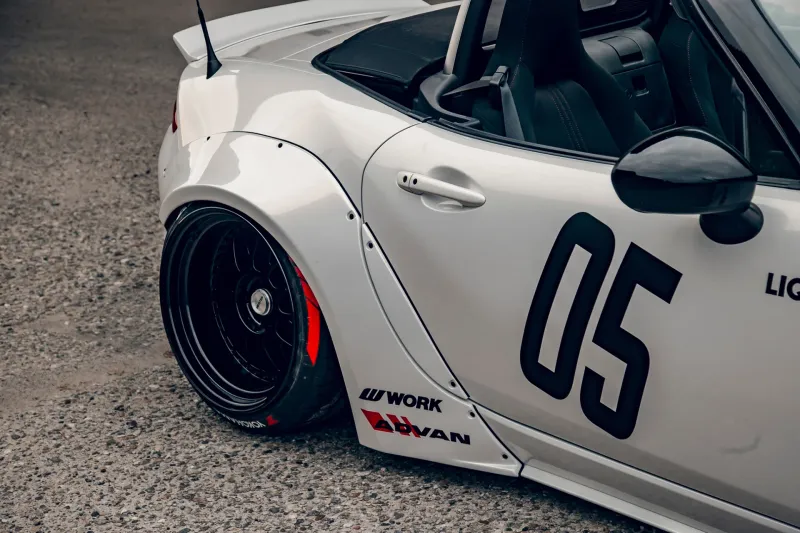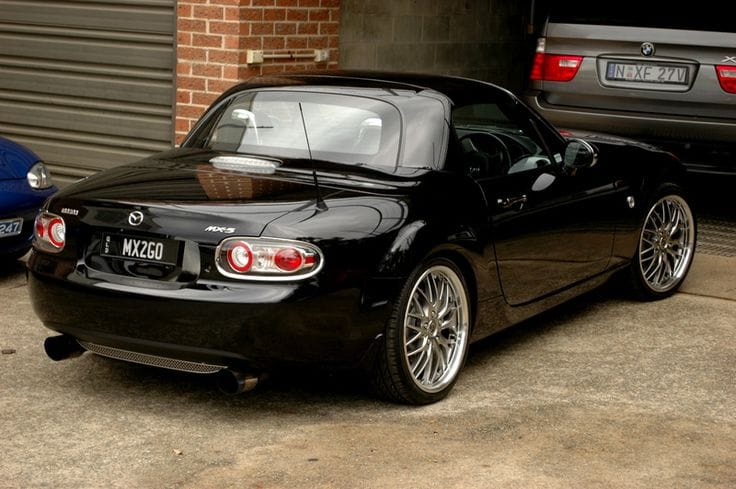NA vs. ND Miata Interiors: Why the Cabin Could Be the Deal-Breaker
That cockpit decides whether a vintage dream feels charming or simply exhausting on the daily commute, at cars-and-coffee, and on long road trips. In short, the interior is often the real tiebreaker.

When enthusiasts compare the first-gen NA Miata (1989-1997) with today’s ND (2016-present), they usually obsess over horsepower, curb weight, or lap times. But in real life you spend every mile inside the car, staring at the dash and fiddling with switches. That cockpit decides whether a vintage dream feels charming or simply exhausting on the daily commute, at cars-and-coffee, and on long road trips. In short, the interior is often the real tiebreaker.
Design Philosophy & Layout
Mazda built the NA with Lotus-style minimalism in mind. Exposed metal door tops, rocker switches, and a plain fascia kept weight and cost down. Early cars even skipped power steering, power windows, and a factory radio unless you paid extra. Jump forward to the ND and you get Mazda’s jinba-ittai “horse-and-rider” ethos. Sculpted door cards flow into a stitched dashboard, and all the controls angle toward the driver. Mazda finally added a tilt-and-telescoping wheel for the 2024 model year, rescuing tall owners from T-Rex arms.

Space, Seating, and Ergonomics
On paper the two generations measure up surprisingly close: around 37 inches of headroom and just over 43 inches of legroom in the ND versus 42.7 in the NA. Yet thicker windshield pillars and, on the RF, chunky buttresses make the newer car feel a tad tighter, especially if you’re over six feet. Seating tells an even clearer story. NA buckets rely on thin foam over steel frames, which is fine for a back-road blast but punishing on a three-hour highway slog. ND seats add deeper bolsters, optional Nappa leather, heaters, and that valuable seat-height adjustment, turning the little roadster into a genuine tourer without jacking up the hip-point.
Materials, Fit, and Finish
The NA cabin wears its age with pride: hard plastics, visible screws, and a vinyl steering wheel that squeaks once the sun cooks it. Charming? Absolutely. Quiet? Not a chance. The ND, meanwhile, mixes soft-touch pads with piano-black trim, nice to look at until the first scratch. Stitching is tighter, gaps are smaller, and yet Mazda still uses lightweight plastics to keep the curb weight in check.

Tech and Convenience
Tech is where three decades truly show. An NA might offer a basic head unit and four speakers if you were lucky, plus headrest tweeters that half the time were wired backward at the factory. The ND counters with a nine-speaker Bose setup that automatically re-EQs when you drop the roof and, starting in 2024, an 8.8-inch touchscreen. Climate control also jumps from three simple knobs with no auto mode to a modern automatic system, though owners swear the vents still struggle in brutal heat. Cupholder count rises from zero to two, but ND holders have a reputation for launching lattes under hard cornering. Instrumentation evolves from a pure analog trio to a hybrid cluster with digital gear and trip info.

Noise, Vibration, and Harshness
Expect to shout in any Miata, but the NA elevates wind roar to an art form thanks to thin carpeting and minimal insulation. Many owners hush the cabin with Dynamat or fit a hardtop. The ND is no Lexus, yet extra seals and Bose’s noise-compensation trickery make highway conversations possible without yelling.
Visibility and Practicality
With its low scuttle and razor-thin A-pillars, the NA offers a panoramic view of the world, especially with the pop-ups down. The ND’s beefier A-pillars and, on the RF, thick C-pillars carve out blind spots that the optional blind-spot monitor has to cover. Luggage space also changes flavor. The NA supplies a parcel shelf and shallow trunk; the ND loses the shelf but adds lockable cubbies behind the seats and a deeper 4.6-cubic-foot boot.

Safety and Everyday Extras
Safety tech is night and day. Early NAs lacked ABS, traction control, or even a passenger airbag. By contrast, every ND comes with dual front and side bags, ABS, stability control, and on higher trims, lane-departure warning and secondary collision mitigation, nice insurance if a Miata has to pull daily-driver duty.
Aging, Maintenance, and Mod Potential
Older cabins age exactly like you’d expect: NA dash tops crack, window regulators quit, and owners often re-foam seats or hunt down scarce OEM trim on eBay. The ND brings its own quirks, frozen touchscreens and fragile cupholder mounts, but most glitches vanish after a dealer firmware update. Overall, the newer car’s electronics tend to survive better than thirty-year-old wiring.
Which Cabin Fits Your Life?
If you crave analog tactility, dig pop-up headlights, and don’t mind rolling windows by hand, the NA will charm you every time you slide behind the wheel, provided you own a second, more practical car for rain, groceries, and relatives. If you need your Miata to handle rush-hour traffic, Bluetooth calls, and maybe even winter, the ND’s heaters, CarPlay, and modern safety kit make it painless. DIY types will relish restoring an NA’s interior with junk-yard treasures, while drivers who’d rather be on the road than under the dash will appreciate the ND’s “just drive” reliability.
Both generations dish out the grin-inducing balance that made the Miata a legend, but they serve it in wildly different wrappers. The NA cabin is a love letter to simplicity; the ND blends that core spirit with comfort and tech that make daily life easier. For many shoppers, that interior delta, not the 0-to-60 time, will decide whether they chase 1990s nostalgia or sign for something showroom-fresh.




